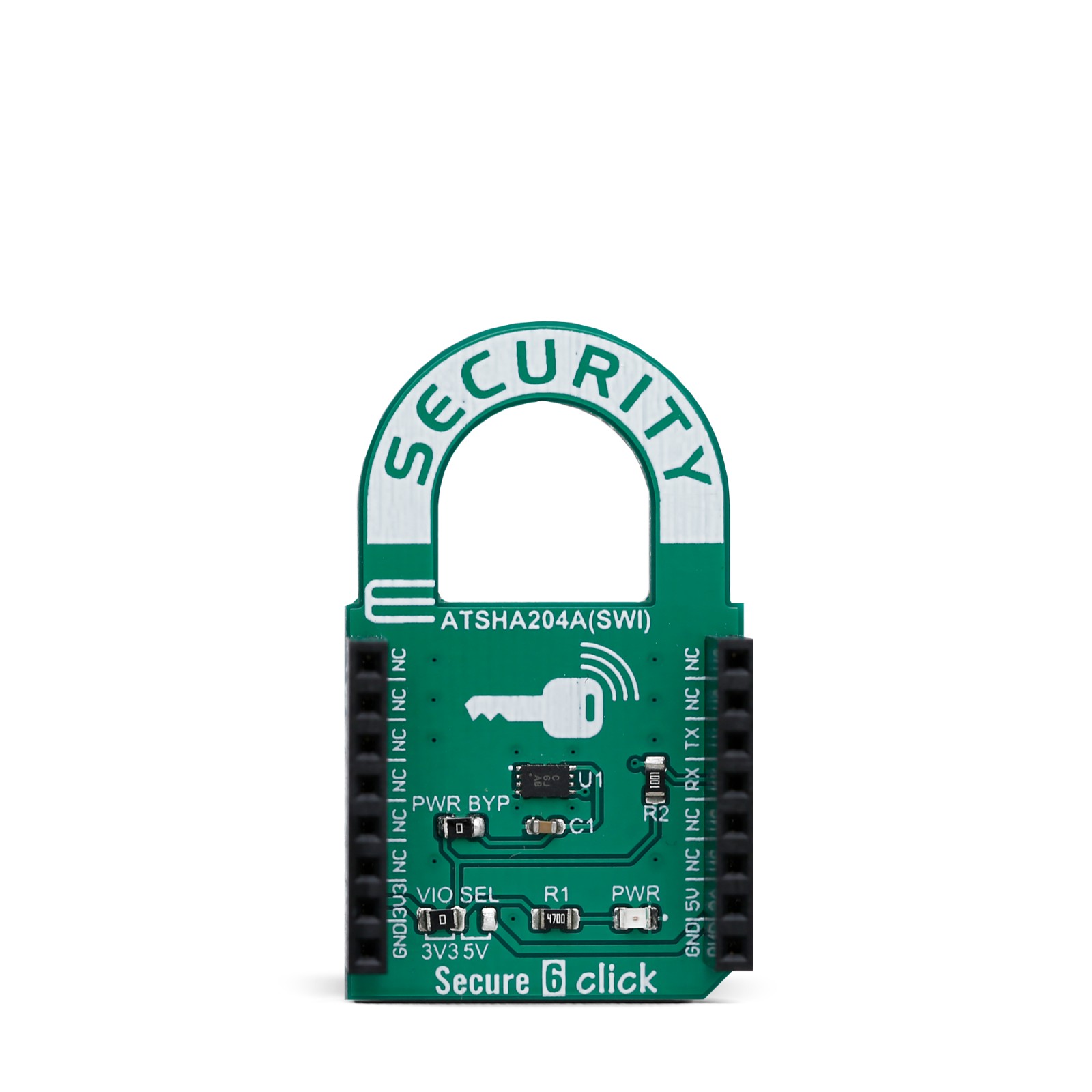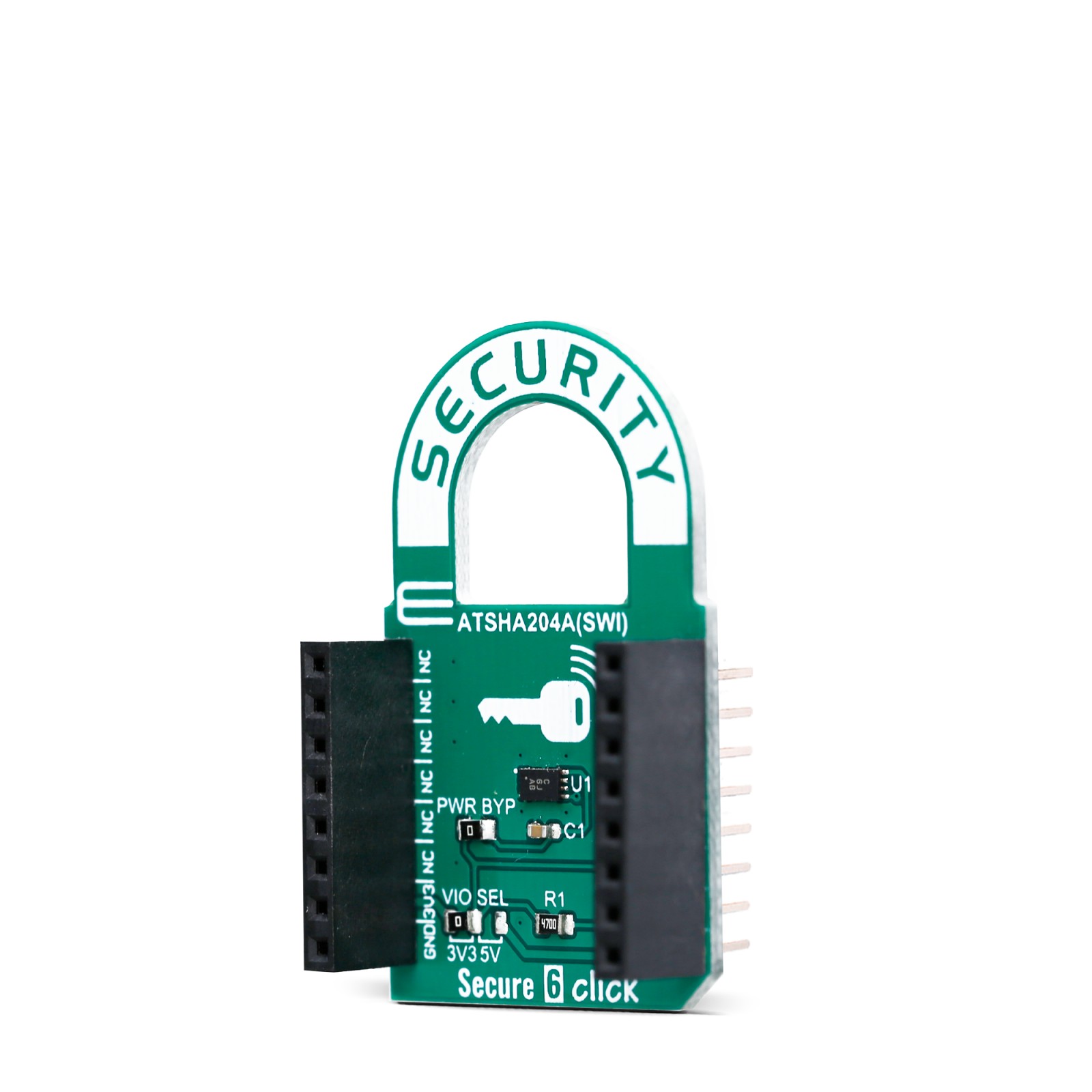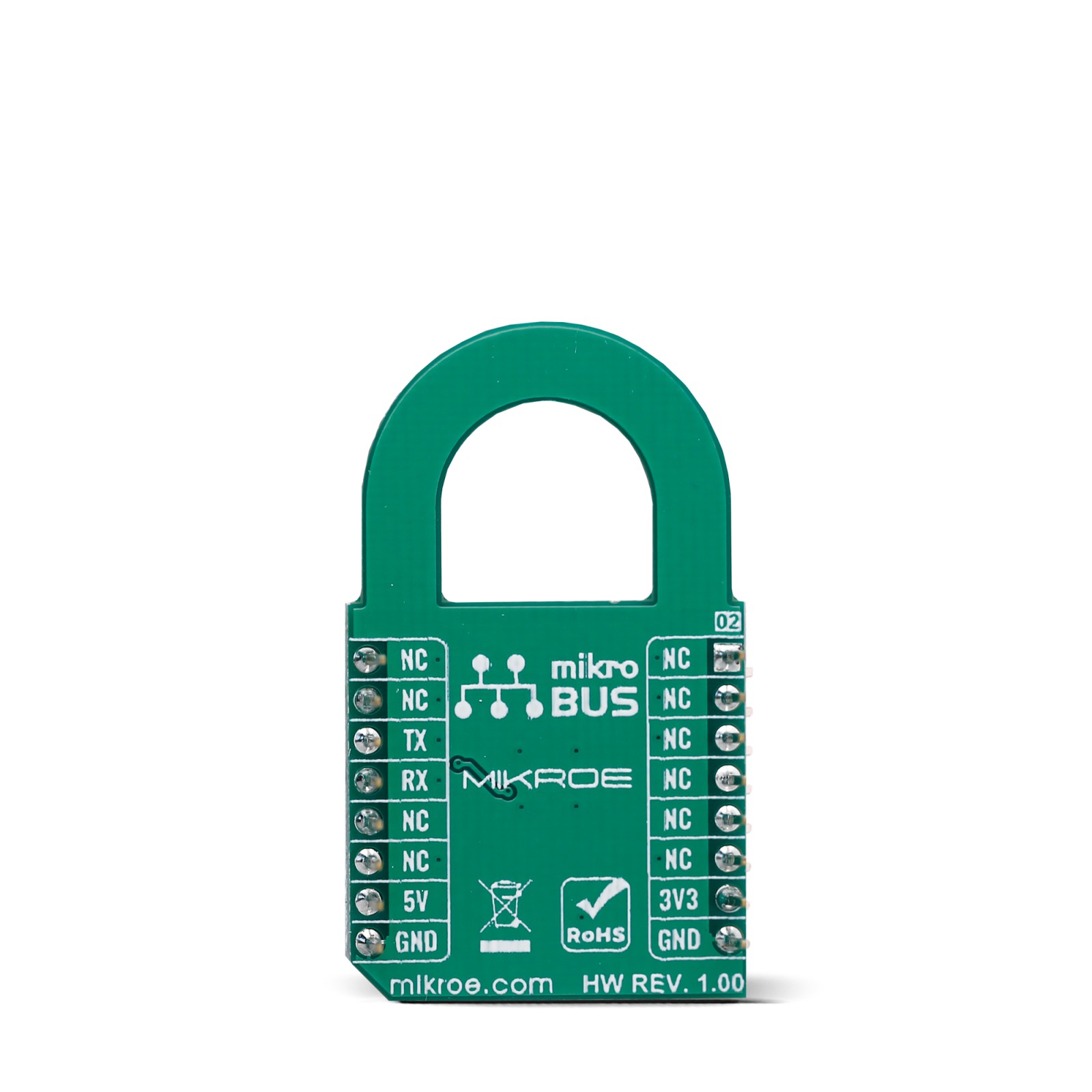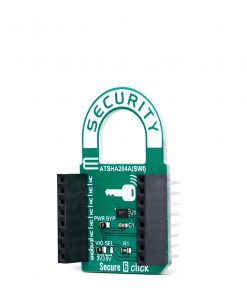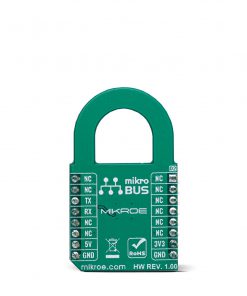Subtotal: R225.00
Secure 6 Click
R150.00 ex. VAT
Secure 6 Click includes the ATSHA204A, a secure CryptoAuthentication™ device from Microchip, which is equipped with an EEPROM array which can be used for storing of up to 16 keys, certificates, consumption logging, security configurations and other types of secure data. The ATSHA204A equipped on this click board™, supports the SWI interface with a flexible command set, that allows use in various security applications, including Network/IoT Node Endpoint Security, Secure Boot, Small Message Encryption, Key Generation for Software Download, Ecosystem control, Anti Counterfeiting and similar.
Secure 6 click board™ is supported by a mikroSDK compliant library, which includes functions that simplify software development. This Click board™ comes as a fully tested product, ready to be used on a system equipped with the mikroBUS™ socket.
NOTE: The click board™ comes with stacking headers which allow you to combine it with other click boards™ more easily by using just one mikroBUS™ socket.
Stock: Lead-time applicable.
| 5+ | R142.50 |
| 10+ | R135.00 |
| 15+ | R127.50 |
| 20+ | R122.70 |

 Proximity Click
Proximity Click 